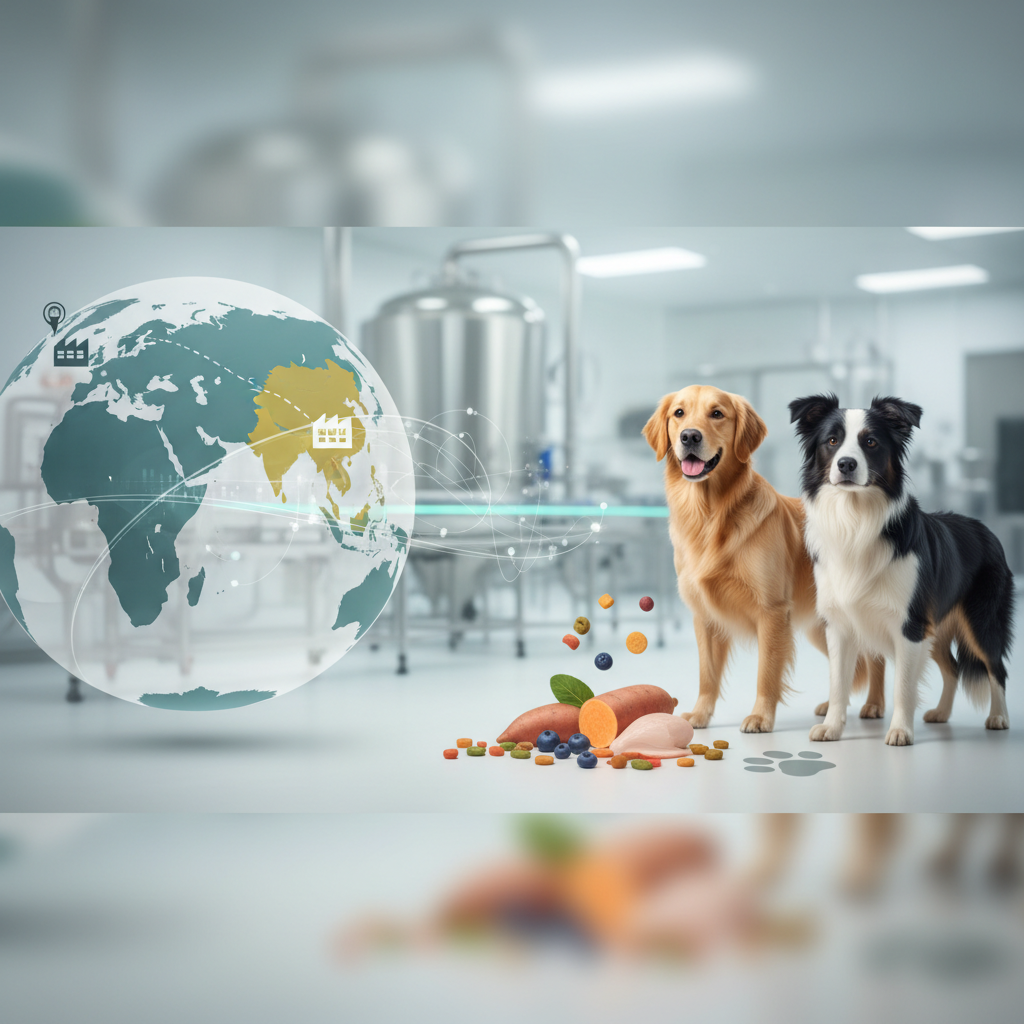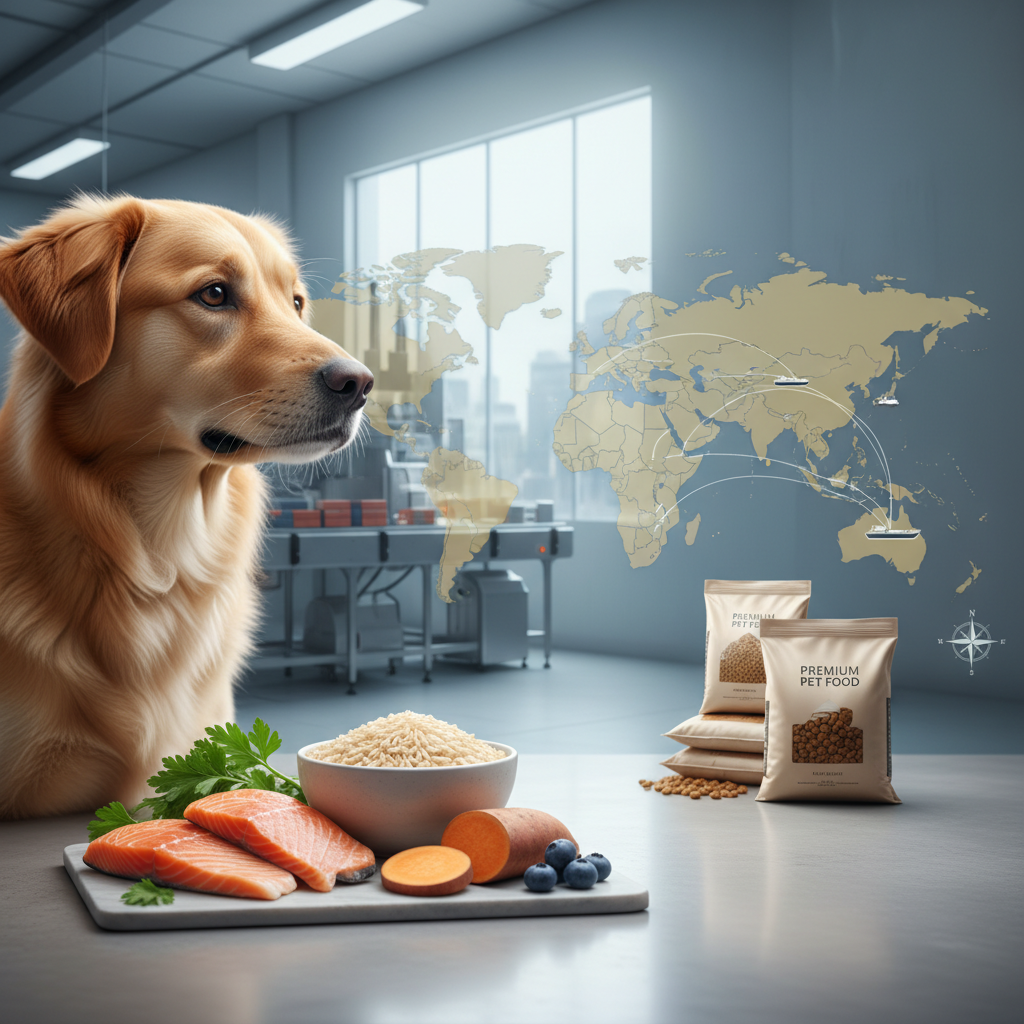

Southeast Asia, a dynamic and rapidly growing economic region, is witnessing an unprecedented surge in pet ownership and, consequently, a robust demand for high-quality pet food. For businesses operating in the B2B space—importers, distributors, wholesalers, and private label brand owners—this presents a golden opportunity. Specifically, the private label dog food sector is poised for significant expansion, offering a pathway to establish strong brand presence and capture market share. This comprehensive guide delves into the intricacies of manufacturing, supply chain management, and exporting private label dog food to this promising region, providing actionable insights for sustainable growth.
The Rise of Private Label Dog Food in Southeast Asia
The pet humanization trend is a global phenomenon, and nowhere is it more evident than in Southeast Asia. Pet owners increasingly treat their companions as family members, leading to a demand for premium, specialized, and trustworthy nutrition. This shift creates a fertile ground for private label brands, which offer flexibility, cost-effectiveness, and the ability to cater to specific market niches.
Understanding the Southeast Asian Pet Food Market
The Southeast Asian market is diverse, encompassing countries like Thailand, Indonesia, Vietnam, Malaysia, the Philippines, and Singapore. While each market has its unique characteristics, common threads include a growing middle class, increasing disposable income, and a strong preference for healthy and safe pet products. Online sales channels are expanding rapidly, and consumers are becoming more ingredient-conscious. Understanding these nuances is crucial for tailoring private label offerings. For instance, in some markets, grain-free options might be paramount, while in others, affordability combined with quality could be the key differentiator. Local preferences, such as specific protein sources or packaging sizes, also play a significant role.
Why Private Label is a Game-Changer
Private labeling allows businesses to develop their own brand identity without the immense capital investment required for establishing manufacturing facilities from scratch. It offers:
- Market Agility: Quickly respond to market trends and consumer demands with tailored products.
- Cost Efficiency: Leverage existing manufacturing capabilities, reducing overheads and production costs.
- Brand Control: Full control over product formulation, branding, marketing, and pricing.
- Higher Margins: Often provides better profit margins compared to distributing established brands.
- Niche Targeting: Ability to target specific dietary needs, breed sizes, or economic segments within the diverse Southeast Asian market.
For importers and distributors, private label products can build customer loyalty, enhance their portfolio, and offer exclusive products not available through competitors.
Navigating the Supply Chain: Raw Materials and Sourcing
A robust and transparent supply chain is the backbone of any successful private label dog food operation. Sourcing high-quality, safe, and consistent raw materials is paramount, especially when aiming for export to discerning markets.
Key Raw Material Considerations for Southeast Asia
When developing formulations for the Southeast Asian market, consider both global standards and local availability.
- Protein Sources: High-quality animal proteins such as chicken, lamb, beef, and fish are essential. Given the regional expertise, ingredients like buffalo meat or buffalo Omasum (for specific treats or specialized formulations) can be interesting, provided they meet all regulatory and quality standards. Novel proteins or insect proteins are also gaining traction for their sustainability profile.
- Carbohydrates: Rice, sweet potatoes, and lentils are common and well-accepted. Grain-free options often use peas, chickpeas, or tapioca.
- Fats and Oils: Omega-3 and Omega-6 fatty acids from sources like fish oil, flaxseed, or chicken fat are crucial for skin, coat, and overall health.
- Vitamins and Minerals: Ensuring a balanced nutritional profile through appropriate vitamin and mineral premixes.
- Additives: Natural preservatives, prebiotics, and probiotics for gut health, and functional ingredients for specific health benefits (e.g., joint support).
Transparency and traceability are critical. B2B partners need assurance that every ingredient can be traced back to its origin, confirming ethical sourcing and quality control.
Optimizing Your Supply Chain for Efficiency
Efficiency in the supply chain translates directly to cost savings and faster time-to-market.
- Strategic Sourcing: Establish strong relationships with reputable raw material suppliers, both local and international, who can guarantee consistent quality and supply. Consider suppliers with certifications like HACCP, ISO, or GMP.
- Inventory Management: Implement robust inventory systems to minimize waste, reduce holding costs, and prevent stockouts. Just-in-time (JIT) principles can be applied where feasible.
- Logistics and Distribution: Plan efficient logistics routes and distribution networks within Southeast Asia. This might involve partnerships with local warehousing and logistics providers who understand regional customs and transportation challenges.
- Risk Management: Develop contingency plans for potential supply chain disruptions, such as natural disasters, geopolitical events, or sudden price fluctuations. Diversifying suppliers can be a key strategy.
Manufacturing Excellence: Quality, Safety, and Compliance
For private label dog food, the chosen manufacturing partner is an extension of your brand. Their commitment to quality and safety directly impacts your brand's reputation.
Essential Manufacturing Standards and Certifications
A reputable manufacturer will adhere to stringent quality and safety standards. Look for facilities with:
- GMP (Good Manufacturing Practices): Ensures products are consistently produced and controlled according to quality standards.
- HACCP (Hazard Analysis and Critical Control Points): A systematic preventive approach to food safety.
- ISO Certifications: Such as ISO 9001 for quality management and ISO 22000 for food safety management.
- Specific Pet Food Standards: Compliance with relevant regional (e.g., AAFCO for products intended for sale in the USA, or equivalent standards in other target markets) or international pet food manufacturing guidelines.
- Traceability Systems: From raw material intake to finished product dispatch, complete batch traceability is non-negotiable.
Regular audits and quality checks, both internal and third-party, are vital to maintain these standards.
Leveraging Technology for Production
Modern manufacturing facilities utilize advanced technology to enhance efficiency, consistency, and safety.
- Automated Production Lines: For precise ingredient mixing, extrusion, drying, and packaging.
- Quality Control Systems: Automated sensors and cameras for defect detection, metal detection, and weight accuracy.
- Data Analytics: To monitor production parameters, identify bottlenecks, and optimize processes.
- Sustainable Practices: Manufacturers increasingly adopt energy-efficient machinery and waste reduction strategies, which can be a strong selling point for environmentally conscious brands.
Exporting Private Label Dog Food to Southeast Asia: A Step-by-Step Guide
Exporting requires careful planning and adherence to international trade regulations.
Market Entry Strategies
- Market Research: Identify specific countries within Southeast Asia with the highest potential for your product type. Analyze existing competition, consumer demographics, and price points.
- Partner Identification: Seek out experienced importers, distributors, or wholesalers with strong networks in your target market. They should understand the local pet food landscape and regulatory environment.
- Product Customization: Be prepared to adapt formulations, packaging, and labeling to meet local tastes, dietary restrictions, and regulatory requirements. This could include language translations and specific nutritional claims permitted in the region.
Regulatory Compliance and Documentation
Navigating import regulations is often the most challenging aspect of exporting.
- Ingredient Restrictions: Certain ingredients might be restricted or require specific approvals in different countries.
- Labeling Requirements: Each country will have specific mandates for nutritional information, ingredient lists, feeding guides, manufacturer details, and country of origin.
- Health Certificates: Veterinary health certificates are often required for animal-derived products, certifying they are free from diseases.
- Import Permits: Importers will need to secure necessary permits from local authorities.
- Customs Tariffs and Taxes: Understand the duties and taxes applicable to pet food imports in each target country. Free Trade Agreements (FTAs) can offer advantages here.
Checklist for Export Readiness:
- Market Analysis Complete: Identified target countries and their unique demands.
- Formulation & Packaging Adapted: Products comply with local preferences and regulations.
- Regulatory Deep Dive: Understood and met all import restrictions, labeling laws, and certification needs for each target market.
- Health Certificates Secured: All necessary veterinary and phytosanitary certificates obtained.
- Logistics Partnered: Established relationships with reliable freight forwarders and customs brokers.
- Financial Preparedness: Understood payment terms, currency exchange risks, and potential financing options.
- Legal Review: All contracts with distributors and partners reviewed by legal counsel specializing in international trade.
Partnering for Success: Choosing the Right Manufacturer
Selecting the right manufacturing partner is perhaps the most critical decision for any private label brand. This partner must not only possess manufacturing capabilities but also a deep understanding of quality control, regulatory compliance, and ideally, international trade.
When evaluating potential partners, consider:
- Experience and Track Record: Look for manufacturers with a proven history in producing high-quality pet food, especially for export markets.
- Certifications and Audits: Verify all relevant quality, safety, and ethical certifications. Ask for recent audit reports.
- Flexibility and Scalability: Can they accommodate your specific formulation, packaging, and volume requirements? Can they scale production as your brand grows?
- R&D Capabilities: Do they have an R&D team to assist with formulation development, ingredient sourcing, and product innovation?
- Communication and Transparency: A partner who maintains open lines of communication and provides transparency throughout the production process is invaluable.
- Logistical Support: Can they assist with export documentation, freight arrangements, or offer advice on navigating international logistics?
A strong manufacturing partnership is built on trust, shared goals, and a mutual commitment to quality.
Conclusion:
The Southeast Asian market offers a vibrant and expanding landscape for private label dog food brands. By understanding market dynamics, optimizing your supply chain, committing to manufacturing excellence, and meticulously navigating export regulations, B2B stakeholders can unlock significant growth opportunities. Success in this complex yet rewarding region hinges on strategic partnerships, thorough planning, and an unwavering commitment to delivering high-quality, safe, and appealing products to pet owners.
Ready to explore how your private label dog food brand can thrive in the dynamic Southeast Asian market? Contact us today to discuss your manufacturing, sourcing, and export needs, and let's build a successful partnership.


